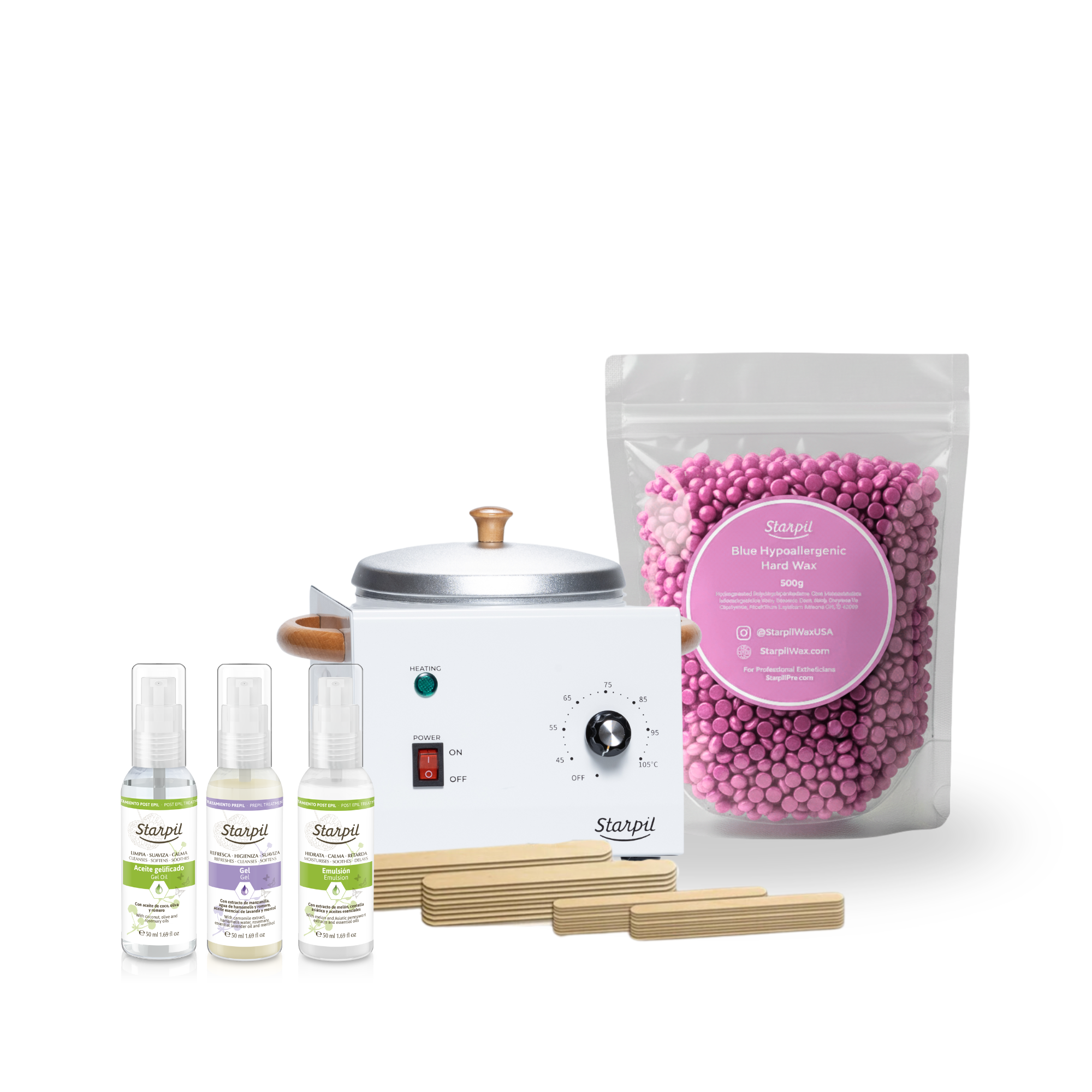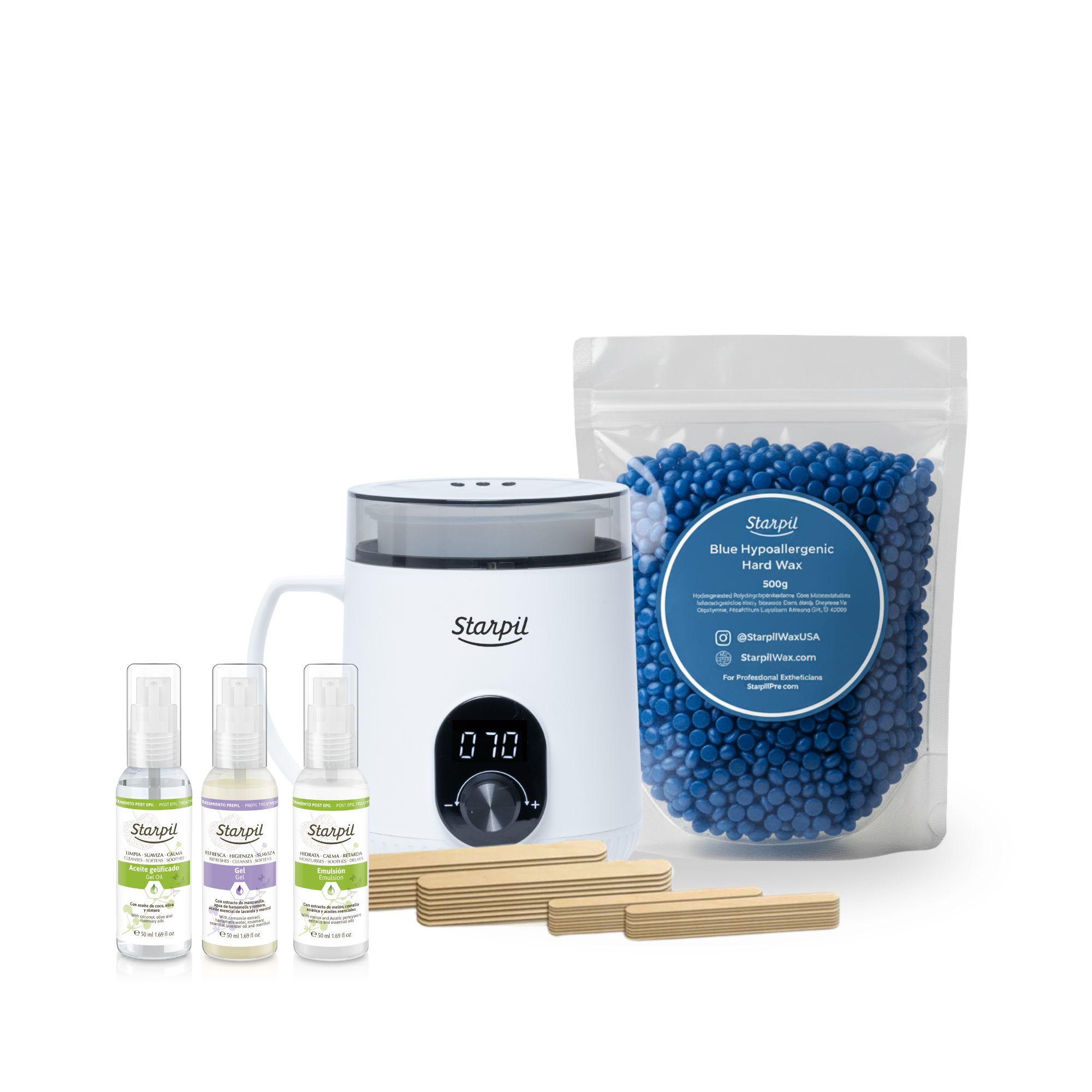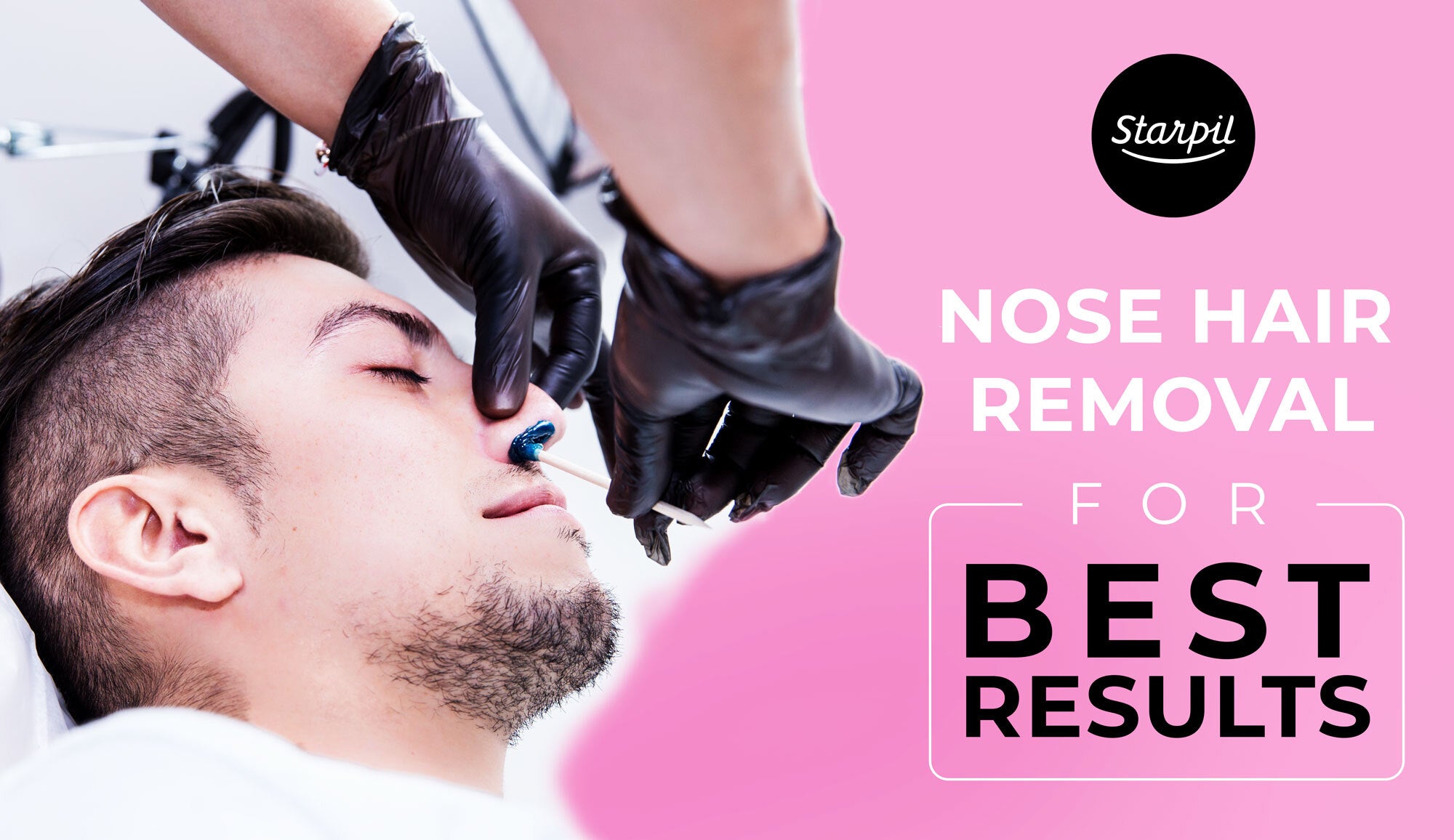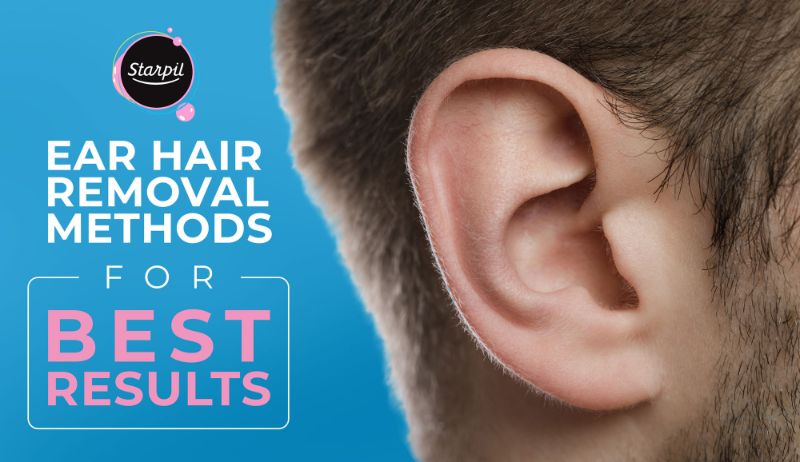How Often Should You Get A Facial?

Few treatments make you feel as fresh and radiant as a facial, and more than likely, your clients walk out of one (that they probably waited too long to have) just to find themselves asking, “How often should you get a facial?”
Busy schedules and little time left for self-care generally have our clients and us often waiting past the period of when we should be maintaining our skincare routine. Really, though, who doesn’t love getting pampered for an hour only to leave with a vivacious glow?! Yet, skincare needs can tend to get pushed aside for other pressing matters.
How do we stress to ourselves and our clients the need for consistency with facials? What’s the average time span of waiting before getting another facial, and are there other factors that influence this?
Table of Contents
- What is a Facial?
- What are the Benefits of Facials?
- How Long Do the Benefits of a Facial Last?
- How Often Should You Get a Facial?
- What are the Different Types of Facials?
- How Often Should You Get a Facial if You Have Acne?
- How Much is a Facial?
- Is Getting a Facial Worth it?
- Facial After Waxing?
- In Summary
Before we get into how often to get a facial or what types there are, let’s cover what a facial is.
What is a Facial?
A facial is generally regarded as a spa treatment, and is used usually to supplement a regular skincare routine. Many people will get facials regularly to enhance their routine, or some might get more intensive facials to kickstart the treatment of certain skin conditions.
The word is used as a blanket term to refer to multiple kinds of facials, which we’ll cover shortly.
Why Do People Get Facials?
So what’s the point of getting a facial? In short, people get facials to take care of their skin! While some get facials to intensely cleanse, exfoliate, and moisturize the skin, and can really help people get a clearer and more even complexion - especially if these facials are used as part of a regular routine.
Facials are also popular among regular users because of the professional work that’s being done on their skin. A professional esthetician’s advice and treatment of their skin from somebody with an educated, trained eye is an amazing way to truly get your skin looking clear and in its best condition.
Another great aspect of getting regular, professional facials is having extractions done to free up blackheads and empty clogged pores or free the skin of impurities. Facials can also be used to increase skin’s circulation, regulate moisture levels, and even increase cell turnover and brighten skin.
Overall, there’s tons of reasons to get a facial, and everyone gets them for different reasons!
What are the Benefits of Facials?
The benefits of facials primarily revolve around achieving beautiful, smooth skin free of inflammation, redness, breakouts, and with existing skin conditions soothed - or even solved!
These treatments are made to treat a variety of skin conditions, and generally give clients more confidence and overall happiness in regards to the health and look of their skin.

Let’s examine a common question most clients ask immediately after receiving a facial.
How Long Do the Benefits of a Facial Last?
The immediate glow your skin gets after a facial can last around forty-eight to seventy-two hours.
However, the lasting effects of the deep cleaning, or more intense facial services provided, will persist and show more within the time period of the upcoming cell turnover, around four weeks or so.
What causes this glow?
Depending on your clients’ skin needs and choice of service, the basic routine of a classic facial will generally include cleansing, exfoliation, extraction, facial masks, finishing with toning, serums, and moisturizer. All of these steps are combined to reach the goal of nourishing, hydrating, and clarifying your skin while targeting problem areas.
The glowing skin from a facial you or your clients receive is due to the increased circulation and blood flow to the skin and added hydration. Extraction and exfoliation remove any dead skin cells that were dulling the skin’s complexion, which dramatically adds to the glow.
The benefits of additional services provided during a facial, like a chemical peel or microdermabrasion, can last a month or longer. While microdermabrasion generally takes off the topmost layer of the epidermis, also known as the stratum corneum, chemical peels have different tiers of how deep they penetrate the skin.
These are all factors into how long the benefits of your facial will last. Understanding this now leads us to the all-important question:
How Often Should You Get a Facial?
As a general consensus, it is recommended to receive a facial once a month or in the range of every four to six weeks.
Why is this the suggested time frame, and how can you explain this to your clients?
Around 28 days, new skin cells come to the surface, and at this point, the next set of dead skin cells are ready to be exfoliated off, cleansed well, and professionally treated to provide the longest-lasting glow and fresh, clean complexion.
Nowadays, there are almost a limitless number of facial treatment options, with facials ranging from light therapy and oxygen therapy to lymphatic drainage and hydrafacials.
Depending on the exact facial you or your clients get, keep in mind, the specialty facials may only be recommended once every few months or so. For example, getting a medium chemical peel treatment during a facial is only recommended every four to six months.
What are the Different Types of Facials?
There are several different types of facials out there for the face (obviously!) - and the body! Let’s go over all of the different treatments and peels out there, and figure out what might be right for you.
Facial Peels
Amongst the many different types of facials out there, many are referred to as just general facials - but it can get much more complicated than that!
Microdermabrasions
A very popular form of facial is microdermabrasion, which is a deeply exfoliating process that removes the outer layer of dead skin cells completely, which leaves behind a healthier and smoother layer of skin. It’s a minimally invasive procedure which improves the side effects of sun damage, aging, acne scarring, and more.
Dermaplaning
Another form of facial peels is dermaplaning, which is when a professional esthetician exfoliates skin by scraping away your skin’s top layer of dead skin cells. This procedure brightens skin and opens pores.
There are also facials out there for those looking to slow the aging process, or just to nourish their sensitive or dehydrated skin a little extra. No matter what you’d like to pamper your skin with, there’s a service out there for you and your skin type!
Chemical Peels
Chemical peels are a type of facial that can improve your skin’s appearance on the face, neck, and even your hands! A chemical peel is performed by applying a chemical solution to the skin that deeply exfoliates the layer of skin it sits on.
Your esthetician peels away the peel, which removes dead skin cells, frees clogged pores, and leaves behind a smoother layer of skin underneath.
If Your Main Skin Concern is Blemishes or Clogged Pores
If you’re interested in getting a facial specifically to treat acne, breakouts, or clogged pores, there are specifically tailored treatments out there that can really change your entire attitude toward your skin!
Acne facials are done to deeply exfoliate and hydrate skin to address oiliness, dryness, and inflammation. A separate procedure commonly done for those who experience a lot of breakouts are extractions, which is when an esthetician actually removes blackheads and unclogs pores using a variety of methods.
What is a Body Facial?
Though they may be called facials, these treatments aren’t just for your face! Body facials are skin treatments that are formulated to treat skin conditions or concerns on your back, buttocks, hands, and more.
The process of body facials are much the same as regular facials, but obviously on much larger areas. They’re designed to treat clogged pores, breakouts, skin conditions, and more. There are even extraction treatments for these larger areas!
These body facials will leave either the specific areas you’ve targeted, or your entire body feeling and looking its best. Treat yourself!
Be sure to always thoroughly explain to your clients the safest time to return for their next facial appointment based upon the type of facial they received and their skin needs.
Be Consistent with Your Facial Routine
Maintaining a consistent routine of regular facials is beneficial for more youthful-looking skin, an even skin tone, cleared out pores, and less scarring from acne.
*Helpful Tip to Explain to Clients!*
Although regular facials once every 4-6 weeks are recommended, depending on each client’s skin condition, sometimes facials more often, even every week, are recommended. Be sure they thoroughly discuss their skin concerns with you and understand your full recommendation.
Unless necessary, facials more than once a month can potentially cause more irritation to the skin as skin turnover has not yet occurred again. For clients with very sensitive or dry skin, facials even up to every 6-8 weeks might be recommended.
So, what if your clients have acne? Does the same 4-6 week rule apply?
How Often Should You Get a Facial if You Have Acne?
If you or your clients have acne, you should get a facial anywhere between once a week up to every three weeks. Depending on how severe the acne is, each esthetician will recommend a different length of time. Sometimes, they may even suggest a light chemical peel be done once or twice a week for a span of a few weeks.
It is always wise to inform clients dealing with acne that any frequent facials and treatments they have for their acne can and will be adjusted once the skin begins to clear up. Communicating the estimated time frame of how long frequent facials will last puts your clients at ease and assures them that everything done to the skin on their face is not excessive nor detrimental to the health of their skin.
So now, what about all of the ones who don’t get professional facials and stick to at-home skincare? With so many “at home” facial products and kits, how can we explain to potential clients that coming in to get a facial is worth their time and beneficial for their skin?
How Much is a Facial?
Facial costs vary depending on what kind of facial you’re receiving, and how intensive it is. Some salons or estheticians will also offer facial memberships, which can offer discounts if you commit to coming in for facials regularly.
For a basic facial, prices generally range from $50 to $75, whereas a more in-depth one can range from $75 to $100 (and up, depending on the process). Peels, especially chemical peels, can run you $100 and up, depending on the treatment itself. Again, these prices are general, and depend on your treatment, how intensive your facial is, and which salon you’re visiting. Make sure to research prices in your area before making an appointment.

Is Getting a Facial Worth it?
Getting a facial is undoubtedly worth it for anyone that wants a clean and clear complexion and radiant, glowing skin….A.K.A all of us!
The question really lies with, is getting a facial with a professional worth it?
There are an abundance of DIY and at-home products to choose from and create a “facial spa day at home,” if you will; but, do these products come close to what the professionals use, and is the care going to be the same at home or in a spa/salon?
While ‘Do It Yourself’ facials and at-home products can do wonders to keeping your skin clean, exfoliated, and hydrated between treatments, they are often generalized products that cannot target your direct skincare complaints.
Professional estheticians are much more knowledgeable and prepared on exactly how to give your skin the deepest clean and revitalizing treatment because of their expertise. During a facial, estheticians often do a thorough skin analysis to provide proper care to their client’s skin.
Aside from licensed estheticians, most of the populace today tend to decide their facial products based on the influencers and advertisements out there. To an untrained eye, these products may all seem beneficial. However, using multiple products just based on what others say works for their particular skin could actually end up doing more harm or simply never solve the problem they are trying to.
But if we’re going to be honest, not everyone has the time or financial ability to maintain regular facials, so skincare needs must be met primarily at home. In this situation, client and esthetician communication is critical.
With an esthetician’s recommendation, clients can find the best-suited products for their skin and a manageable at-home routine to give them the best results. While keeping up with their routine, the next time they can come in for a professional facial, their skin will be in much better shape and help keep their lovely glow!
*Helpful Tip to Explain to Clients!*
If your clients can come in for regular facials every four to six weeks as recommended, keep them completely involved about what they should be doing at home in between appointments to maximize the benefits of these professional facials.
Discuss with them why regular day and night cleansing is vital, along with a weekly exfoliation regimen. The exfoliation will help to keep dead skin cells off that cause a dull complexion. Remind them to wait a few days after their facial before they exfoliate so as not to irritate the fresh skin.
Lastly, emphasize the importance of using an SPF every day to prevent any damage from the sun. Regular skincare, including professional facials, is only helpful as long as your skin is protected and maintained!
Facial After Waxing?
In addition to regular facial treatments, estheticians might also offer facial waxing as a separate treatment (and not to be combined or done after a facial treatment whatsoever!). Facial waxing is a popular service to remove the skin of hair and to deeply exfoliate and remove dead skin cells.
It may seem tempting to combine several beauty services into one appointment in order to save time. And although some treatments go well together, a wax and a facial should never be paired.
Facials can sometimes cause an increase in skin sensitivity which may result in temporary redness, swelling, and mild discomfort after treatments. Factors include which facial treatment you choose and will vary from one person to another.
Remember that waxing causes mild trauma to the skin, which quickly subsides under normal circumstances, but if the skin has not healed properly after a facial then waxing could cause unnecessary pain and damage to the skin.
It is recommended to wait a few days after a facial to get a face wax in order to be sure that the skin is totally healed. Once the skin is back to normal, using a Starpil Facial Waxing Kit makes it easy to complete a facial waxing service with ease.
In Summary

How often you should get a facial is based mainly upon skin cell turnover time. Since this is around 28 days, a professional facial is recommended once every four to six weeks.
However, depending on the different facial treatments received and current skin conditions, like acne, you may recommend that your clients come sooner for the following facial, or maybe even later than six weeks.
In the beauty industry, communication between professional and client is always vital. A thorough explanation of their skin type after a skin analysis, products, and expert counsel on a regular skin care regimen will create a welcoming environment for your clients and an atmosphere of trust so they will continue to come back.
With the knowledge you supply, clients can maintain the cleanliness of their skin in between treatments and feel confident about how often they should get a facial.
Resources:











